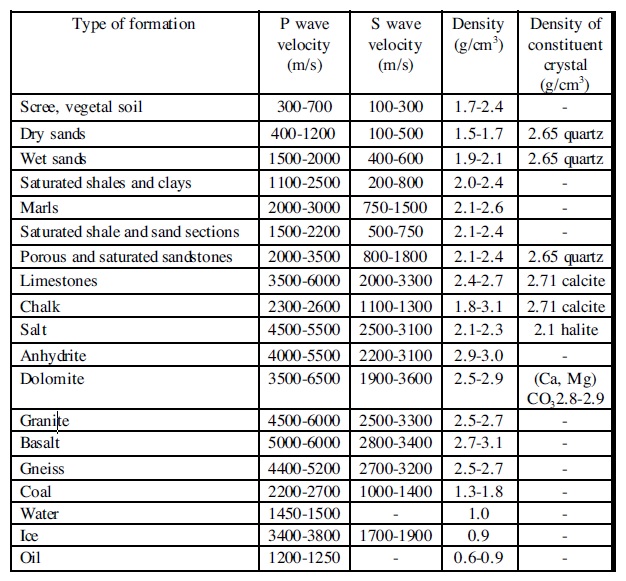How fast do p waves travel?
1 Answer
It depends on the medium that they're travelling through.
Explanation:
P-waves (also called pressure waves and/or primary waves) are the first waves to be seen on a seismograph, which makes them the fastest travelling waves. The waves' speed depends on the medium they're moving through, such as liquid (water, oil), solid (rock), or a gas, in addition to the inclusion of fractures or vesicles in solids. Density also plays a very significant role.
The generic answer is 5 to 8 km/s, but they can travel much faster or slower depending, of course, on the matter they're moving through. The fastest speed, as shown below in the image, is the propagation through the earth's core, near 14 km/s (though it's generally referenced as approximately 13 km/s).
The speed of p-waves is relatively slow through some looser solids, like scree (smaller rocks) and substances that are mostly solid, like soil. These can be as low as 300 m/s, which is slower than the generally referenced speed of sound (about 340 m/s at sea level).
It is much faster through the more dense rock, like basalt or its intrusive cousin, granite (upwards to approximately 6 km/s each). Below is a good reference table.
Also note that I use the word "speed" while most people use "velocity" to describe the rate of propagation of the waves. Technically speaking, speed is the more correct terminology since there isn't a direction referenced for it to qualify to be labeled as a vector quantity (unless, of course, you choose to reference one, but that's not really how waves work).

